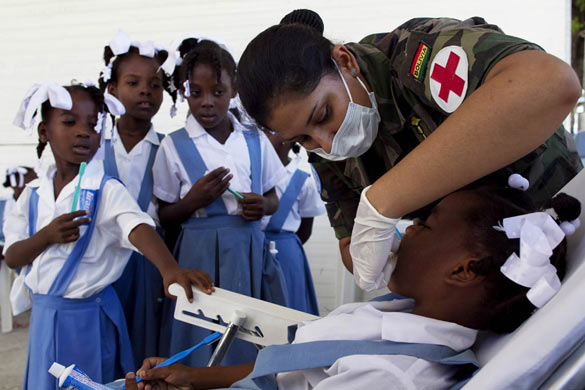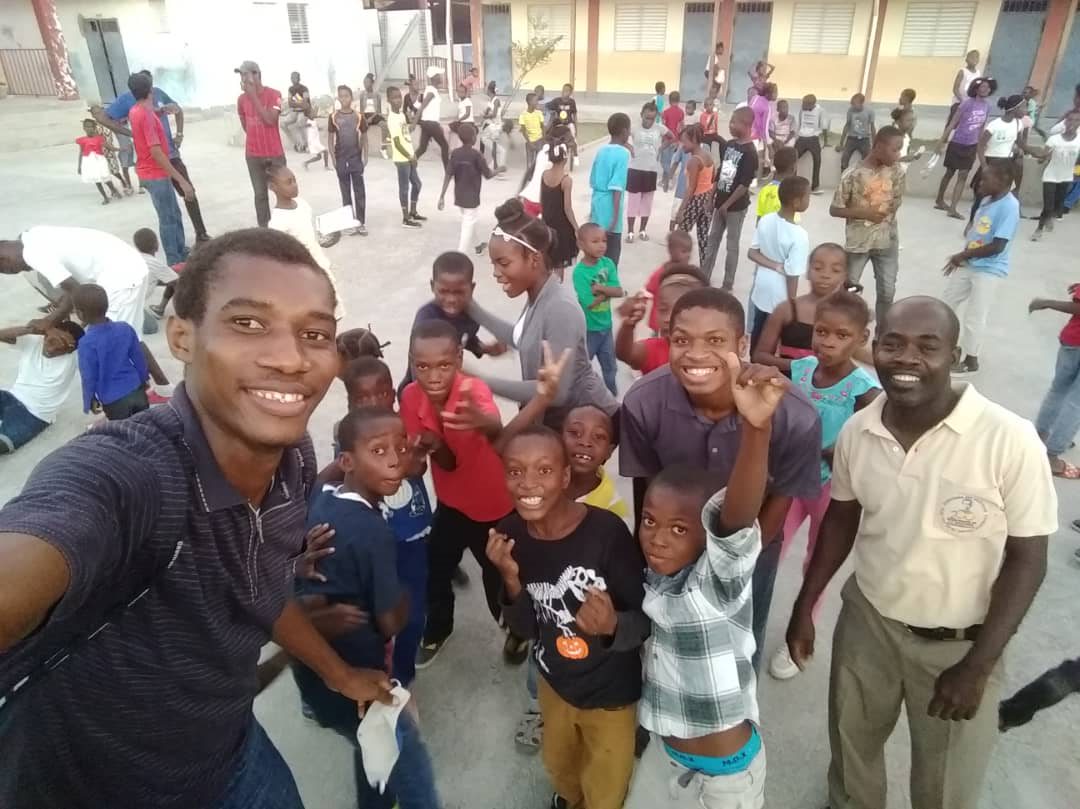UNITED NATIONS (Haiti): UN-Backed Survey Finds Progress for Children in Education, Nutrition and Health Sectors

(United Nations) 10 January 2013 – Almost three years after a devastating earthquake struck Haiti, preliminary results of a new United Nations-backed national household survey show substantial progress for children there in the education, nutrition, health and sanitation sectors since 2006.
According to the initial results of the Haiti Demographic and Health Survey (DHS), which covered 13,350 households, 77 per cent of children aged 6-11 years attended primary school in 2012, compared to just below 50 per cent in 2005-2006 when the last survey was conducted.
Acute malnutrition among children aged 6-59 months has been reduced by half from 10 per cent to five per cent, and chronic malnutrition has been cut from 29 per cent to 22 per cent between 2005-2006 and 2012.
“Results of the survey show that the efforts of partners in Haiti in these three years contributed to progress in many sectors and mitigated the impact on children of the 2010 earthquake, the outbreak of cholera and other disasters.” said the representative of the UN Children’s Fund (UNICEF) in Haiti, Edouard Beigbeder.
“These findings call for a continued commitment to support the country in sustaining this success while addressing existing challenges and where progress has lagged,” he continued.
The Caribbean nation has been re-building since the earthquake struck in early January 2010, killing some 220,000 people and making 1.5 million others homeless, in addition to causing widespread destruction – particularly in the capital, Port-au-Prince – and a major humanitarian crisis.
The DHS 2012 was conducted by the Institut Haitien de l’Enfance, under the overall direction of the country’s Ministry of Population and Public Health, and was supported by UNICEF and the UN Population Fund (UNFPA), amongst others.
The survey also notes that the under-five mortality rate, at 88 child deaths per 1,000 live births, has shown a declining trend in the last 15 years, according to new estimates, down from 112 in 1997-2001 and 96 in 2002-2006.
Access to improved sources of water remained unchanged at 65 per cent, while 82 per cent of residents of internally displaced camps had access to improved sources of water. Access to improved sanitation almost doubled from 14 per cent in 2005-2006 to 26 per cent in 2012.
The 2012 Haiti DHS estimates socio-economic, demographic and health indicators for the entire Haitian population, including women of child-bearing age, children under five years of age, men aged between 15 and 59 years old. The last survey took place between October 2005 and June 2006.
###
UN Photo/Logan Abassi




